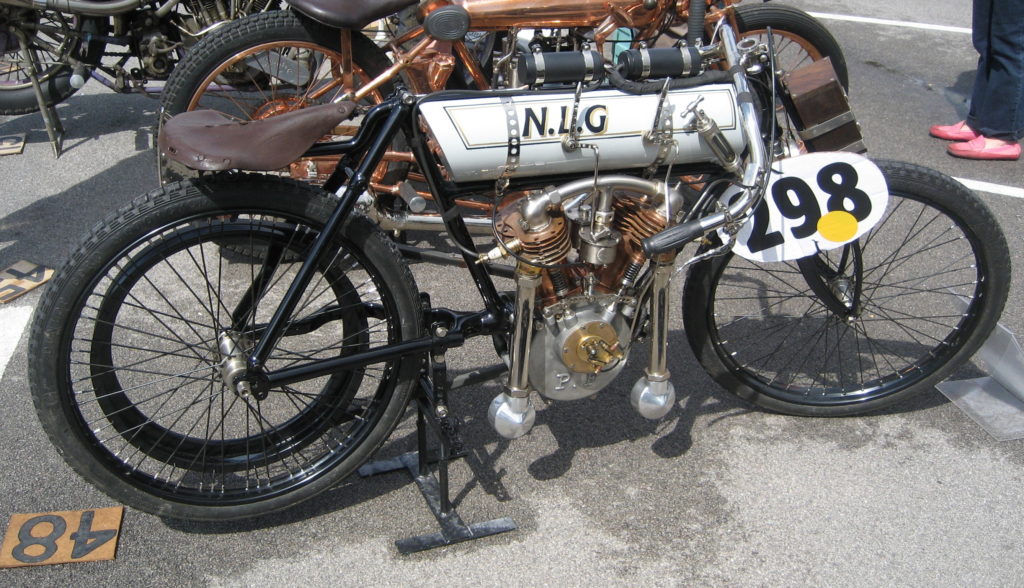
This NLG was raced by W.E. Cook (see photo below), but was owned by A.G. Forster, owner of North London Garage, the automobile repair works where Cook was employed. He competed against 20 other riders, including Charlie Collier, winner of the first Isle of Man TT the previous June (single-cylinder class) on the Matchless of his own make. Apparently though the Peugeot-engined NLG (shades of Norton’s first TT winner – note the ‘PF’ cast in the crankcase – Peugeot Freres) walked away from the competition during the race, to win by over 5/8 of a mile; quite a distance for such a short event, with a speed of 63mph. The prize for the race was 20 Sovereigns – a fortune in those days (probably equivalent to $20k).
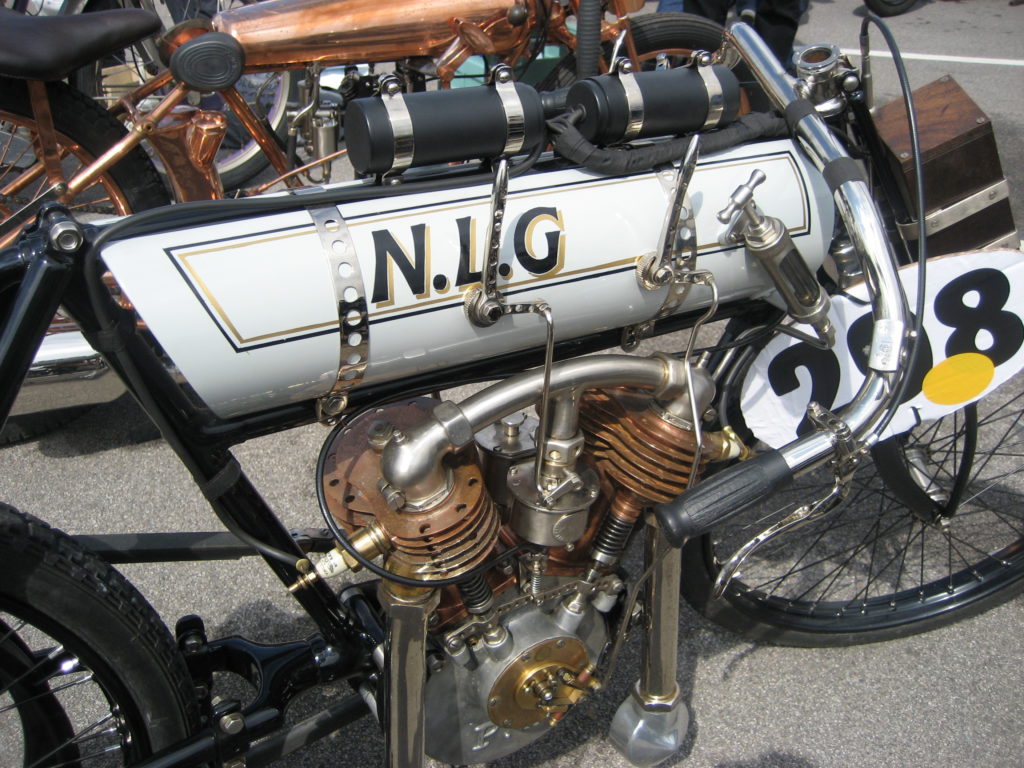
Another Peugeot-engined machine placed second in the race. The engine has a 80x94mm bore and stroke, giving a capacity of 944cc, using automatic inlet valves (ie opened by the suction of the piston in the bore), with cast iron pistons. The barrels have been copper plated, perhaps in hope of better cooling, and drilled through their fins. A French Longuemare carburetor is used, and below it can be seen the large brass contact breaker assembly for ignition timing, with the ignition coils mounted on top of the gas tank. The cycle parts are built from Chater-Lea castings, who supplied many in the motorcycle trade with their chassis fittings.
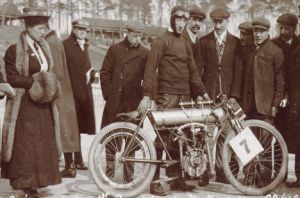
A look at the side of the tank shows the lever for the throttle, and in front of that a lever to control ignition timing, with finally the oil pump handle and tube. During the race on the notoriously bumpy Brooklands concrete track, the rider would probably have left the carb and ignition levers fully forward for flat-out running, but would have had to reach over from those wonderfully dropped handlebars to give the oil pump a press several times during the race. Interesting details abound on this machine, sorry I didn’t get to take more detail pix (click on the photos for a better look), but note the individual cast aluminum ‘mufflers’ on the end of each exhaust pipe, the extensive drilling of all parts for lightness, and the big wooden battery case carried on the front forks. A truly elegant racer.
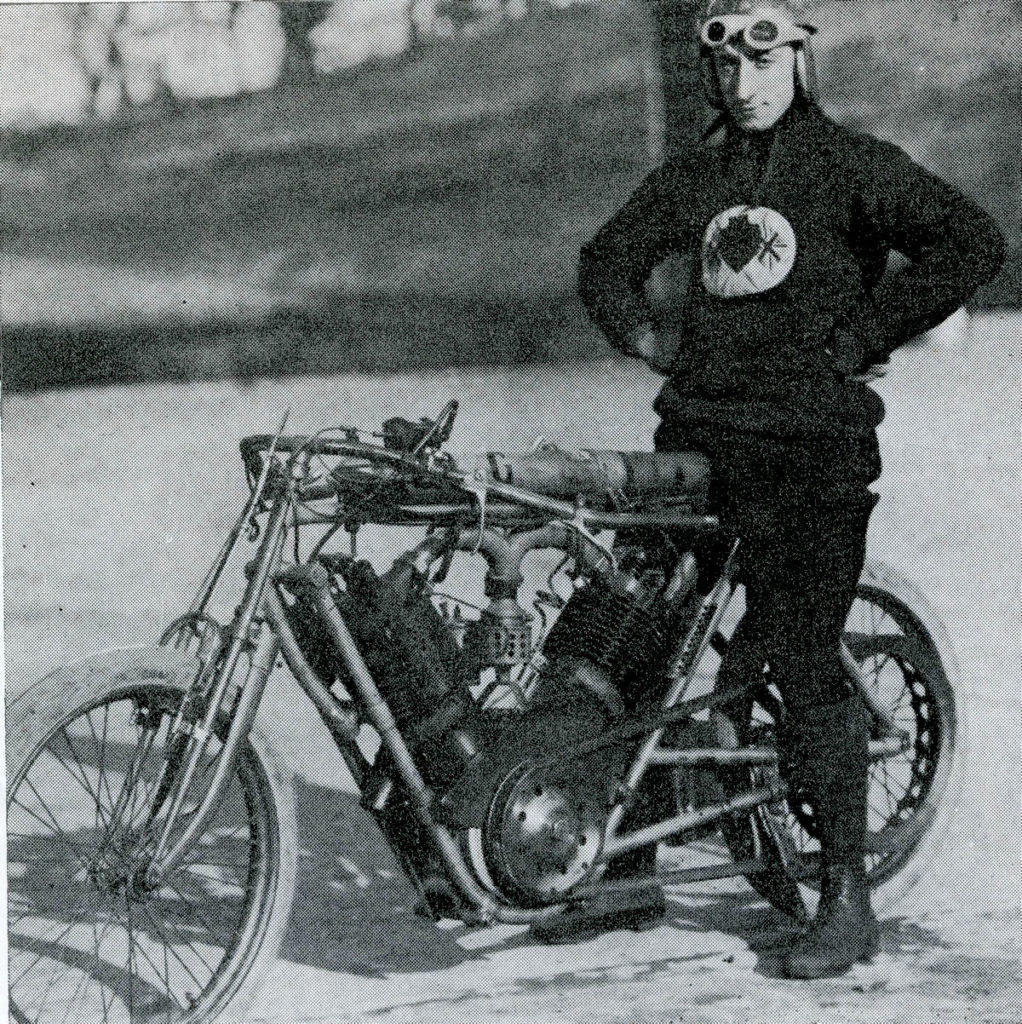

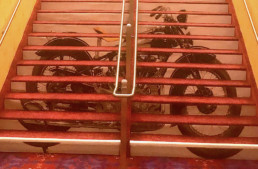
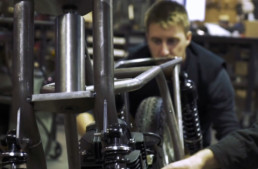
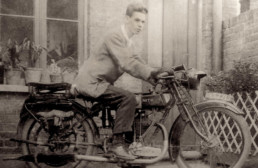
21 guineas in 1907 is equivalent to £1766 today…..
Bonjour Paul,
French carburator brand was Longuemare and not “Longmuere”.
It’s always a pleasure a pleasure to see (watch?) your blog..
Merci Jacky!